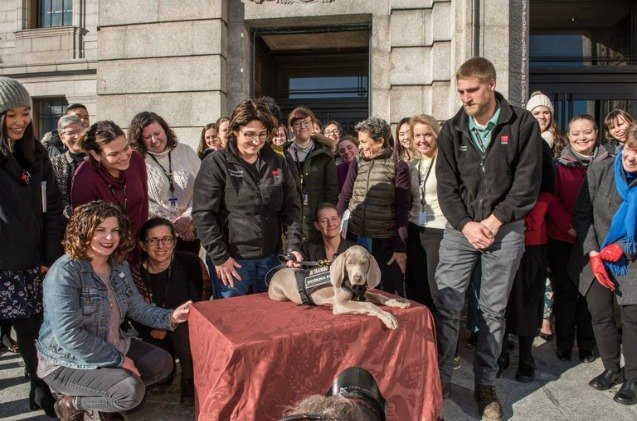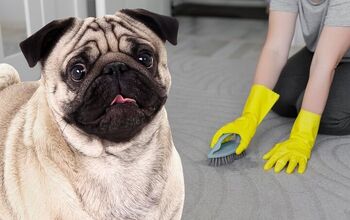The Nose Knows: Puppy Protects Priceless Artwork in Boston

In Boston, a 12-week-old puppy has a very important job. In fact, Riley’s job is one some might call priceless.
That’s because he is trained specifically to sniff out moths or other pests that might damage pieces of artwork in the Museum of Fine Arts in Boston. High-value and irreplaceable pieces of artwork, that is.
Related: Bug-Sniffing Dog Protects Pepper Crops in Canada
Katie Getchell is the deputy director of the museum and she says that bringing Riley, and his nose, specifically, into the museum is part of a trial project to see if he’s even going to be good at it, and how feasible a protection plan it really could be.
Riley is the family pet of museum employee Nicki Luongo. Luongo trains police dogs on her own time, and some began to question whether or not she could train Riley to sniff out the horrible insects that love to eat through priceless pieces of artwork–specifically the canvas, textiles and wood.
Dogs’ noses have long been trained to sniff out bedbugs, ants, cancer, explosives, bodies and other things…so why not moths and other art-eating pests? The museum has a pest-control protocol, but if successful, Riley could be an extra layer of protection against the one million people (and the insects that might ride on their clothes) that visit the museum each year.
Pepe Peruyero owns a dog-training company called Pepedogs, and he says that they’ve been able to train dogs to work accurately and consistently with specific insects, so the museum’s plan is a sound one.
And while dogs are known for detecting scents, and with accuracy, it’s the telling to the human that Riley will need to perfect. The current plan is to teach him to learn the scent of specific bugs that are harmful, and then to sit in front of the artwork he smells them in when he does. Then humans can follow and thoroughly investigate.
Related: The Secret to a Happy Dog is to Let Them Get Their Sniff On
Getchell says that Riley’s success could be helpful for other museums who are looking to protect their art as well, but she also said that Riley’s work will be completely out of the public’s eye and only after hours. The museum doesn’t want their focus to be having a moth-sniffing dog, but they do understand that Riley has a public already and are looking into ways to meet the needs of Riley’s ‘fans.’
Getchell says the staff understands the excitement, and will certainly not deprive the public of Riley’s adorableness.
After he’s finished working, of course!

More by Lori Ennis























